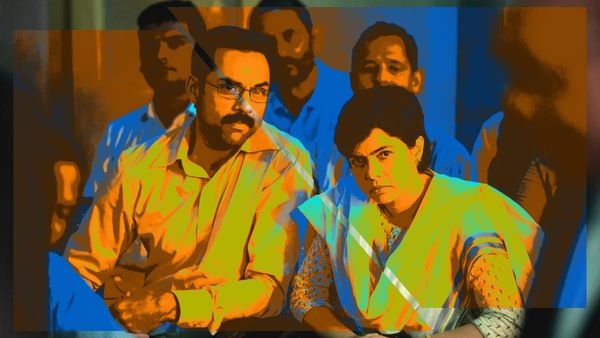Newsletter: Trial By Fire Delivers A Blistering Verdict On Economics Of Loss
Netflix's Trial By Fire, on the Uphaar Cinema tragedy, is a devastating watch for a number of reasons.

Last Updated: 10.04 PM, Jan 18, 2023
This column was originally published as part of our newsletter The Daily Show on January 16, 2023. Subscribe here. (We're awesome about not spamming your inbox!)
***
IN THE SIXTH EPISODE of Netflix’s Trial By Fire (‘Villains’), the wife of an electricity technician flits in and out of her kitchen, as the world around her takes turns being chaotic and ruinous. Behind her is the kitchen window that looks across to the neighbours’ houses. We are allowed an intimate peek through this window, to people doing mundane things: on her daughter’s wedding day, the residents of the house opposite the woman’s are embroiled in a quarrel; on the day that her husband’s culpability in a tragedy troubles her, we see an expectant mother being humoured. Life — the series is trying to tell us — at least the panoramic extent of it, is undefinable through collective truths. No two tragedies are the same, just as there aren’t any identical moments of joy.

TRIAL BY FIRE tells the story of the Krishnamoorthys, a modest Delhi couple who lost their two children in the fire that broke out in South Delhi’s Uphaar Cinema in 1997. Played by Abhay Deol (masterful) and a mesmerising Rajshri Desphande, the couple anchors a sprawling narrative that is brave enough to play with the idea of time as an invisible conduit for disaster: the fact that no tragedy ends on the night it occurs. In fact, it continues through the bodily existence of those who must live on with its fallouts. Where Trial By Fire is most luminous and uncompromising, however, is the way in which it asserts the economics of a disaster. The cold, hard fact that loss hits different people in different ways, and that even in the dastardly throes of grief and death, some find opportunity.
Of the many grieving victims of the Uphaar tragedy showcased in the series, there are also those for whom survival continues to be more relevant than closure. A man who lives in a shanty struggles to put together enough money to perform the last rites of his loved ones. A woman who still has a child to look after, chooses to side with the future she can build. Both, at least momentarily, make deals to keep their mouths shut. The former out of desperation, and the latter out of a desire to sieve through the ruins, to find something worthwhile to hold on to other than pain. Call it cynical, but there is practicality to these actions, unlike the poeticism of justice or at least the need for it. It would, in effect, be naïve to expect Indian institutions to function and deliver as they are expected to. It’s why people choose within the safety of their own broken moral compass, rather than at the altar of the anthem-ised national one.
Of all the stunning performances in Trial By Fire, which also includes Anupam Kher and Ratna Pathak Shah as an elderly warring couple, there is the quietly haunting sight of Ashish Vidyarthi, going around fixing witnesses and victims of the tragedy. Even in the shadow of disaster that he is basically working towards hiding, Vidyarthi climbs through his own little ladder of social inequality. In one scene he scouts a palatial house, but doesn’t evidently possess the cultural equity to fully appreciate it. “You make my clients nervous,” a wealthy lawyer bemoans, as a comment on his appearance — so essential to what he’s been tasked with accomplishing. It’s a cruel joke, a man’s attributes defining his limits rather than the possibilities. In another scene where he gets cold feet, his wife tells him firmly ‘to do what needs to be done’.
The series often jumps forward and backwards in time, across lives, and in doing so it emphasises the distance each experience of grief and elation are from the other. It paints a canvas so vast, it becomes impossible to summarise tragedy through the faces we see, the lives we learn about. People died in the Uphaar Cinema fire, but despite its fiery urgency, some operated with the clarity of abandon. A manager chose to run away with the day’s collections — his loyalty to his bosses, a tragic aspect of this story of many moving parts. An on-duty attendant, who is also reeling from money problems, hesitantly withdraws from social life. There is simply no pinning the emotional scale of disaster to static images of unmoving charred bodies.
Trial by Fire is innovative, intimate and exceptional but it is foremost a wide canvas of broken fragments, rather than a routine portrayal of atomic loss. The Krishnamoorthys might be the anchors, but it’s the sprawling nature of disaster that the show studies and exhibits masterfully — and after a point, even gives up on. The story of the couple that waged this fight against the might of the Ansals is only the natural centrepiece. But it’s those that surround it, interacting with the geometry of their tale, that astound you. Tragedy, the series tells us, might be birthed in the certainty of death. Its economy, however, is a matter of reading, of hearing or seeing through windows that we usually don’t.
